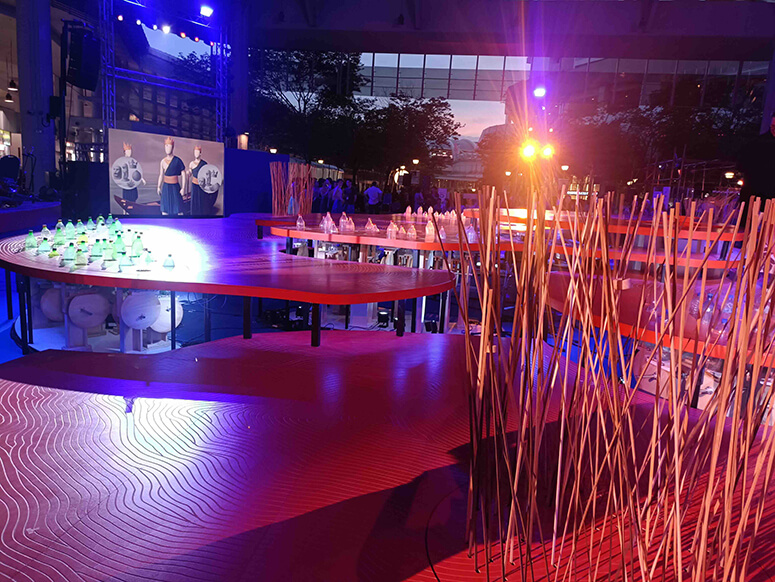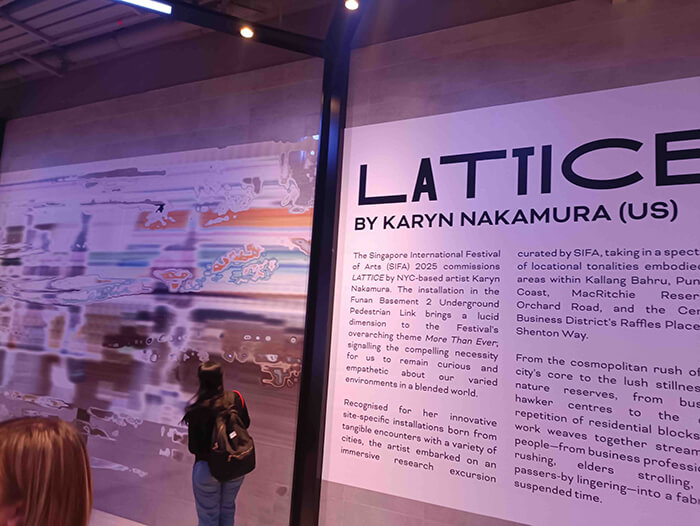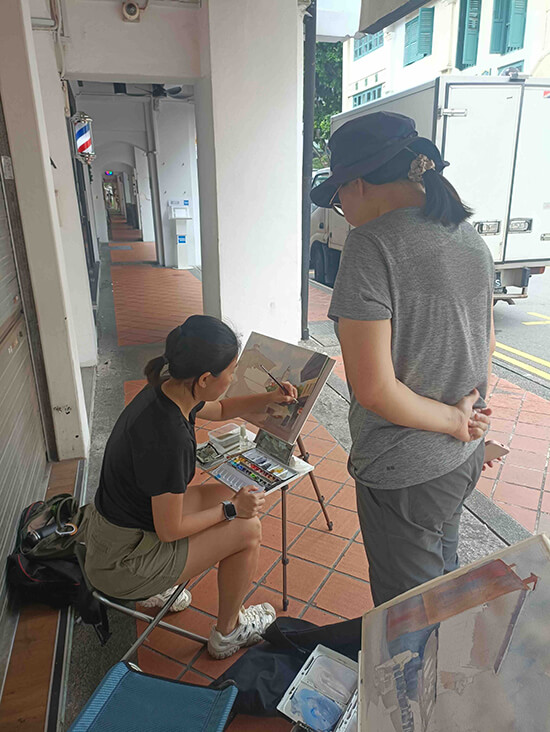Outliers Singapura
In the exhibit City of Others: Asian Artists in Paris, 1920s–1940s, ongoing at the National Gallery Singapore till August, is the Filipino painter Macario Vitalis’ Houses in Puteaux (1937), one of hundreds of artworks by Asian artists in Paris from 1920s to the 1940s, roughly spanning peacetime between the two world wars.
Vitalis is from Ilocos Sur, part of a generation of manongs who sought the proverbial greener pastures abroad in his country’s fledgling years as an American colony. In France he lived on second-floor accommodations of an establishment in the Parisian suburb of Puteaux that housed a restaurant on the ground floor, where the museum guide said the painter had his meals.
“Likely painted on-site, Houses in Puteaux reimagines a familiar streetscape as a dynamic yet harmonious composition,” a notecard beside the painting says. “Vitalis cultivated a style that infused geometric rigor with a keen sensitivity to the lyrical interplay of forms within space.”
Also part of the show are Trees and Personage by Xu Beihong, ink and color on paper, and a series of spot cartoons for newspaper by the future revolutionary Ho Chi Minh, as well works by other artists like Georgette Chen, Le Pho, and Liu Kang, each reflecting the French style of impressionism and modernism in their respective works, however maintaining a distinct Asian flavor.

What comes to mind when you speak of Paris between wars, the elderly guide asks a motley group of journalists from Southeast Asia visiting on opening weekend of the Singapore International Festival of Arts. One ventured Hemingway, another Virginia Woolf; no mention of Gertrude Stein and her love for Alice B. Toklas and her rose by any other name still a rose.
The guide is going at a hundred words a minute to try to beat the schedule for the next number in the visiting journalists’ program brought to the island garden state by Arts House Limited.
Earlier that Sunday of alternate sun and rain, as the domestics and other blue-collar workers of the region gathered for streetside picnics on their usual day off, there was a tour at the Arts House of the Cultural Medallion, Singapore’s version of the National Artist award. Given yearly in batches and since dispensing with specific genres because of growing multidisciplinary work, the medallion came up empty (no award) only thrice. There has also been instituted a medallion for young artists, almost like a counterpart to the Philippine 13 Artists award, the winner of which is not disqualified from winning the main prize when artist grows older. The cultural medallion comes with a S$80,000 purse, which the winner may use to further the arts in the island state by whatever means, be it publishing books, or setting up galleries or art spaces, or holding workshops and interactive programs that involve the community, if not set aside a portion for oneself to produce even more art.

Winners of the medallion must be citizens of the island state, or longtime residents or married to a Singaporean, and whose affinity to all things Singapura cannot be denied. Past winners include Filipino jazz musician Louis Soliano in 2018, no surprise considering the number of Filipino musicians the world over toiling over music sheets else improvising through plain oido. Soliano started on the drum kit, learning the basics of rhythm and later trying out other instruments, multi-instrumentalists not being uncommon in the jazz world, the better to master theories of composition.
There is an autobiography of Soliano in a small library at the Arts House that traces his development as a jazz musician and how he wound up in Singapore playing in 8-bar time, and books by other winners of the medallion such as hitherto obscure writers, whose style was mainly under description, at least from the limited time of browsing.
At the nearby Asian Civilizations Museum is a pagoda extravaganza, a storied excursion into Asian architecture, and varied manifestations of the Buddha and other Eastern gods, while other delegation members braved a climb to the Clock Tower, where one could get a good view of the city amid rows of bells.

Or you could choose to take a stroll by the boat quay, where perhaps there are a pair of watercolorists practicing their craft on sidewalk, while bronze figures converse in a moment frozen in time, and a group of overseas Filipinos on promenade can be heard speaking in a familiar language.
How much has Singapore changed since last you were here 12 years ago? That was a question asked more than once during the latest brief stay. What could I say but still orderly and efficient, one of the hosts Say Hua might say sometimes too efficient, but one can’t deny that the island state resembles a huge BGC, wonderfully first world yet keeping its pockets of myth and heritage well preserved.
You don’t want to go to Newton Circus, guide Aneesha says, when the place is mentioned as possible destination of drinkers and gourmands in their cups of squawking crows, long-lost acrobats.
Surely 12 years is a long time, the highways wider and road networks a dizzying maze, though sitting on the left passenger side without a steering wheel in front needs getting used to. On a fine Sunday morning before the sudden downpours was a walk down Northbridge Road through the Bras Basah complex of bookstores and art materials, past Funan Mall and its Ya Kun kaya toast shop and Elgin bridge and the legendary Bak Kut Teh restaurant, deep in Singapura where things have a way of assimilating their own legends.


